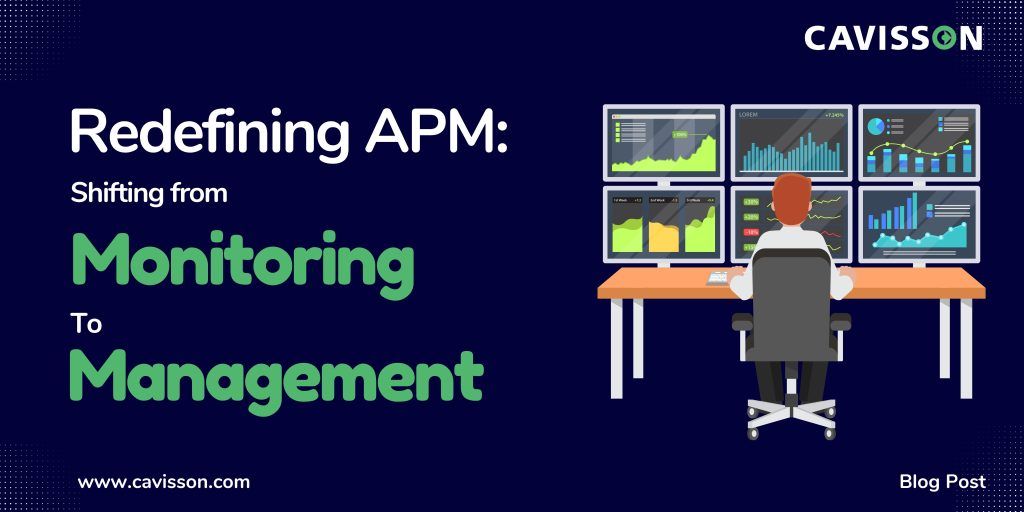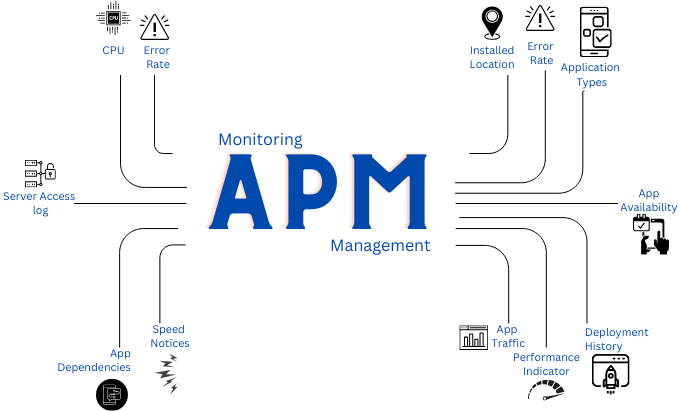
Introduction
Application Performance Management (APM) has become a crucial practice in modern software development and operations. Traditionally, APM has been synonymous with monitoring—keeping a vigilant eye on system performance metrics and reacting to deviations. However, as technology landscapes evolve and demands on applications grow more complex, the role of APM is also evolving. In today’s digital age, APM is not just about monitoring; it’s about proactive management and optimization. Let’s explore how this shift from monitoring to management is redefining APM.The Evolution of APM
In the early days of APM, the primary goal was to detect and diagnose performance issues within applications and infrastructure. Monitoring tools provided valuable insights into metrics like response times, throughput, error rates, and resource utilization. However, these tools often operated in silos, offering limited visibility into the end-to-end performance of complex, distributed systems. As organizations embraced cloud computing, microservices architectures, and DevOps practices, the need for a more holistic approach to APM became apparent. Developers and operators required tools that could provide not only real-time monitoring but also actionable insights for optimizing performance, improving user experience, and driving business outcomes.Application Performance Monitoring vs Application Performance Management
What is Application Performance Monitoring?
A broad definition of monitoring would be anything related to tracking an application’s or website’s performance. As an example, certain tools only check your website once a minute to see if it is up and how long it takes to load. You could argue that this is the most basic type of application performance monitoring available. But basic HTTP ping type checking hardly qualifies for advanced or enterprise-level application monitoring. It may inform you that your website is slow or down, but you won’t know why. Here are some other examples of basic application performance monitoring:- Monitoring the CPU of your servers.
- analyzing the access logs from your web server to find out the average number of requests and their duration.
- Tracking and monitoring application error rates.
- Monitoring network traffic to identify slowdowns.
- monitoring important data from dependencies on the application.
- You can receive alerts about slow page speeds from Google Analytics.

How is Application Performance Management Different from Application Performance Monitoring?
Application Management
The first significant difference is being application-aware and focused. Most application performance monitoring tools measure performance in some way, but they rarely understand the application’s overall context.
For example, checking if https://google.com works will only tell you whether the site is up or down. It makes no sense that the site might be running on a dozen load-balanced servers.
Most APM solutions automatically identify and track all of your applications across all environments. This includes both pre-production and production environments.
To track and manage their applications, development teams need a few things:
- Application type (web, background service, etc)
- Installed locations & number of server instances
- Deployment history
- Application availability/uptime (SLAs)
- Web application traffic/usage
- Performance indicators (response times, satisfaction scores, etc)
- Error rates
These details help developers understand what is happening with their applications. Thanks to Cavisson’s end to end observability solution, they now have the solution they need to successfully manage their critical applications and ensure exceptional customer experience.
Let’s dive into the future of APM with Cavisson NetDiagnostics tools
The future of Application Performance Management (APM) with Cavisson NetDiagnostics promises to aid organizations and teams to effectively identify the proverbial needle in the haystack when it comes to identifying and resolving issues. Here’s how we see it shaping up:
- Advanced AI Integration: Cavisson NetDiagnostics integrates AI capabilities to enhance its APM functionalities. This means leveraging machine learning algorithms to automatically detect performance issues, predict potential problems, and provide accurate RCA when issues are observed.
- Deeper Insights: As technology evolves, APM tools will provide even deeper insights into application performance. NetDiagnostics aims to offer more granular data analysis, allowing businesses to understand user behavior, application dependencies, and infrastructure bottlenecks with greater precision.
- Automation and Orchestration: Expect NetDiagnostics to incorporate more automation and orchestration features, enabling IT teams to automate routine tasks, deploy updates, and scale resources.
- Enhanced User Experience Management: A key focus for NetDiagnostics will be on enhancing user experience management. This includes monitoring end-user interactions, optimizing application responsiveness, and proactively addressing issues to deliver a seamless user experience across different devices and platforms.
(For more you can also read –https://www.cavisson.com/the-future-of-apm-aiops-ecosystems/)
Conclusion
In conclusion, the landscape of Application Performance Management (APM) has undergone a significant transformation, evolving from traditional monitoring practices to proactive management and optimization strategies. This shift signifies a fundamental change in how organizations approach APM, emphasizing the importance of actively managing application performance to ensure optimal user experiences and business outcomes.
Looking ahead, the future of APM with tools like Cavisson NetDiagnostics holds great promise. With advanced AI integration, deeper insights, multi-cloud compatibility, automation, and enhanced user experience management, organizations can expect to further improve their application performance and deliver superior user experiences across different devices and platforms.

